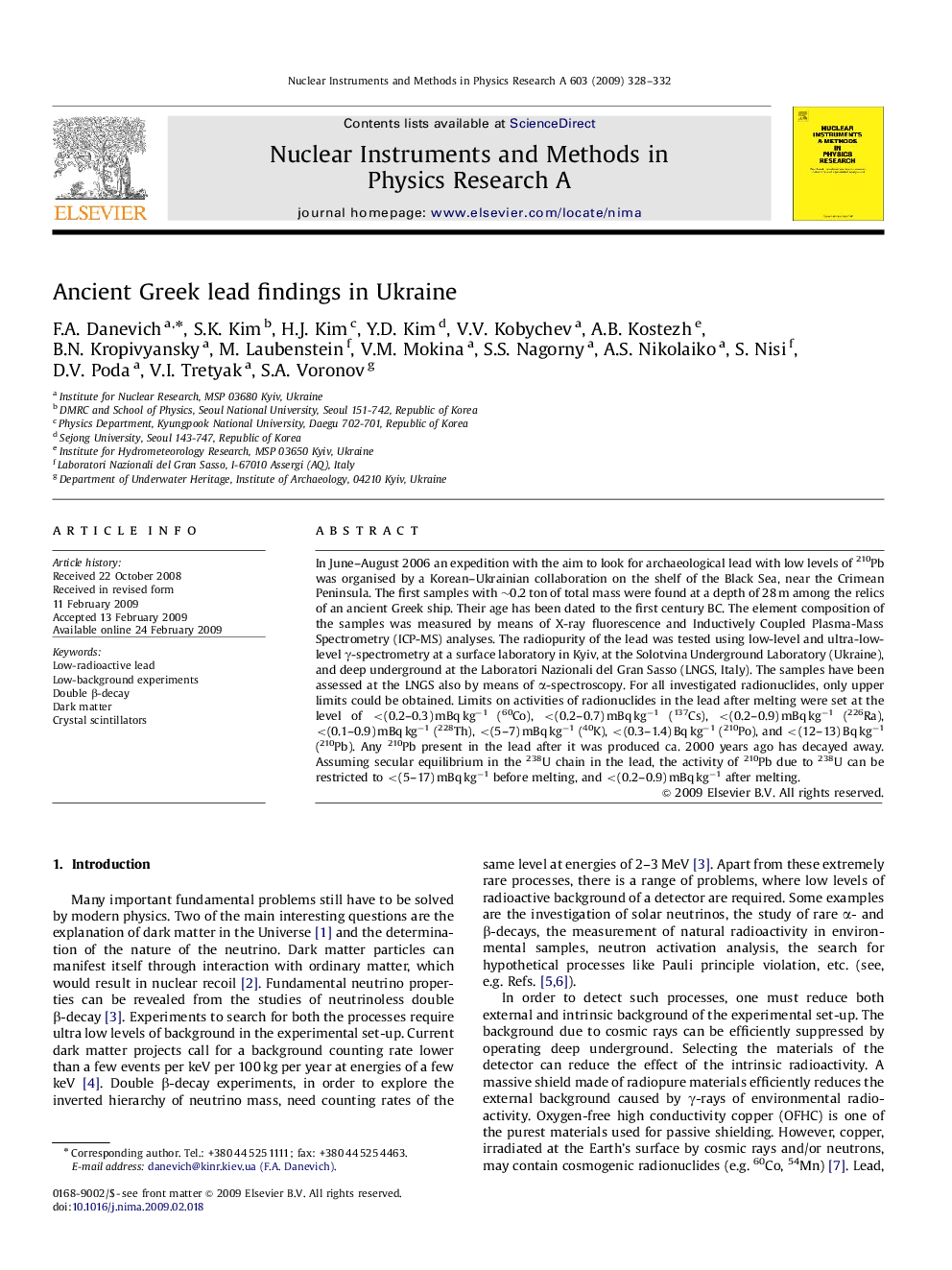| Article ID | Journal | Published Year | Pages | File Type |
|---|---|---|---|---|
| 1828744 | Nuclear Instruments and Methods in Physics Research Section A: Accelerators, Spectrometers, Detectors and Associated Equipment | 2009 | 5 Pages |
In June–August 2006 an expedition with the aim to look for archaeological lead with low levels of 210Pb was organised by a Korean–Ukrainian collaboration on the shelf of the Black Sea, near the Crimean Peninsula. The first samples with ∼0.2 ton of total mass were found at a depth of 28 m among the relics of an ancient Greek ship. Their age has been dated to the first century BC. The element composition of the samples was measured by means of X-ray fluorescence and Inductively Coupled Plasma-Mass Spectrometry (ICP-MS) analyses. The radiopurity of the lead was tested using low-level and ultra-low-level γ-spectrometry at a surface laboratory in Kyiv, at the Solotvina Underground Laboratory (Ukraine), and deep underground at the Laboratori Nazionali del Gran Sasso (LNGS, Italy). The samples have been assessed at the LNGS also by means of α-spectroscopy. For all investigated radionuclides, only upper limits could be obtained. Limits on activities of radionuclides in the lead after melting were set at the level of <(0.2–0.3) mBq kg−1 (60Co), <(0.2–0.7) mBq kg−1 (137Cs), <(0.2–0.9) mBq kg−1 (226Ra), <(0.1–0.9) mBq kg−1 (228Th), <(5–7) mBq kg−1 (40K), <(0.3–1.4) Bq kg−1 (210Po), and <(12–13) Bq kg−1 (210Pb). Any 210Pb present in the lead after it was produced ca. 2000 years ago has decayed away. Assuming secular equilibrium in the 238U chain in the lead, the activity of 210Pb due to 238U can be restricted to <(5–17) mBq kg−1 before melting, and <(0.2–0.9) mBq kg−1 after melting.
